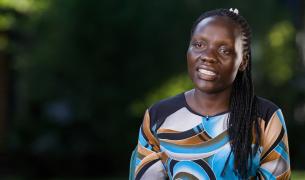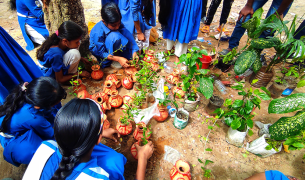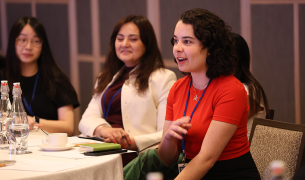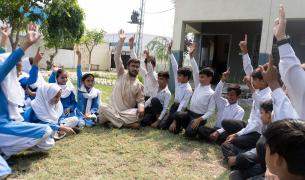Everyone learns and everyone teaches
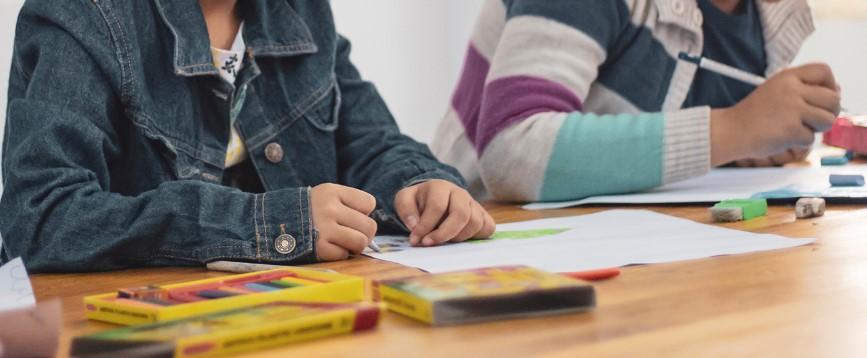
Teach For Italy was created to help build a country where every boy and girl, regardless of their geographical origin or their socio-economic status, has the opportunity to obtain a high level of education and develop the skills they need to fulfill their potential. On International Migrants Day, this mission is particularly relevant for the millions of children and young people with a migratory background who live in Italy today.
For the last two decades Italy has been at the centre of one of the most important migration routes in Europe, and has become a destination for migrants coming from an ever larger number of cultures and countries. Official figures show that immigrants in Italy still represent less than 10 percent of the country’s total population, however, these numbers don’t take into account hundreds of thousands of people who arrived here illegally and are forced to live in the shadows of the system. Italy is becoming a multi-ethnic, multi-religious society, and nowhere is this clearer than in our classrooms.
A good education has always been the basis of a healthy integration process, one that allows a society to renew itself and grow. Unfortunately, this is not always a priority for the school system, in terms of providing extra resources or tools, such as extra teachers for literacy, training on multicultural dialogue, or extra hours for group work. Sometimes, however, it is exactly when there are few resources available that new ideas emerge and innovation begins.
About two months ago, my class, already a melting pot of second-generation migrants of different origins, was joined by Sam, a boy who had just arrived in Italy from Pakistan, not speaking any of the languages taught at the school or spoken by us teachers: Italian, English, or French. At first I thought working with Sam would be easier for me... I teach math! But I was wrong.
It was initially a great challenge to keep order in the class and at the same time try to engage Sam, having an online Italian-Urdu translator as the only means of communication with him. I found it hard to encourage him to socialize with his 11-year-old classmates, who speak such a different language from his own.
Initially, therefore, I took advantage of the fact that the classroom was equipped with two blackboards, and I started to give him math exercises to do independently, while I was teaching the rest of the class. But I was so unhappy to see him working autonomously, not interacting with his classmates, and every day I struggled, trying to understand how to engage him more without disrupting the regular course of the lessons.
One day, while Sam was doing an exercise on his own blackboard, his classmate Andy corrected him, telling him that the result of his calculation was wrong. Andy explained to Sam how to solve the product using his fingers to do the calculation. With Andy's explanation, Sam immediately grasped the concept, because Andy found a way of communicating that I had never taken into consideration... hands!
I initially scolded Andy, because (as usual!) he was not following the lesson. But a second later, instead, I found it wonderful that Andy was not following the lesson to take care of one of his classmates.
Delighted by the connection I saw between the two boys, a light bulb went off in my head and I immediately asked Andy if he wanted to go to the blackboard with Sam and assist him in multiplications. Andy was enthusiastic about the idea and ran to the blackboard to tutor his partner Sam, who finally had someone to learn with!
Since that day, everyone has asked to help Sam to do exercises on his blackboard, and we have now set up 10-minute shifts, in which every student has the opportunity to support Sam during the class.
Now in my class the new scheme is: The teacher teaches the class, while, alongside the teacher, the classmates teach Sam.
Everyone learns and everyone teaches. We have created a class-in-class system—a system based on cooperation and mutual exchange that develops academic as well as interpersonal and social skills in a dynamic and profound way. Sam learns math supported by the class he has just entered and the other kids discover a sense of community, they become empowered and all grow together.
It is a joy to see how the lessons have changed. Sam is no longer alone in front of his blackboard, but now his classmates all want to do exercises with him. Therefore, Sam is also socializing and feeling included, that's s-cool!
I am not the only teacher; the lesson is built together with the children. Today you teach, tomorrow you learn.
As a fellow of Teach For Italy and a member of the Teach For All network, I strive every day to ensure that the school system, in addition to being a transmitter of knowledge, is also a place where children are helped to become more aware adults and prepared for a rich world of diversity.
For International Migrants Day, I hope this story offers a window into the many ways that at Teach For Italy #WeTogether can make a difference in our classrooms and outside, by creating a network of supporters who pursue the mission of making our society more open, welcoming, and just.
